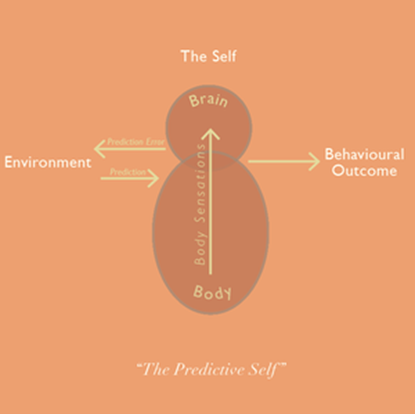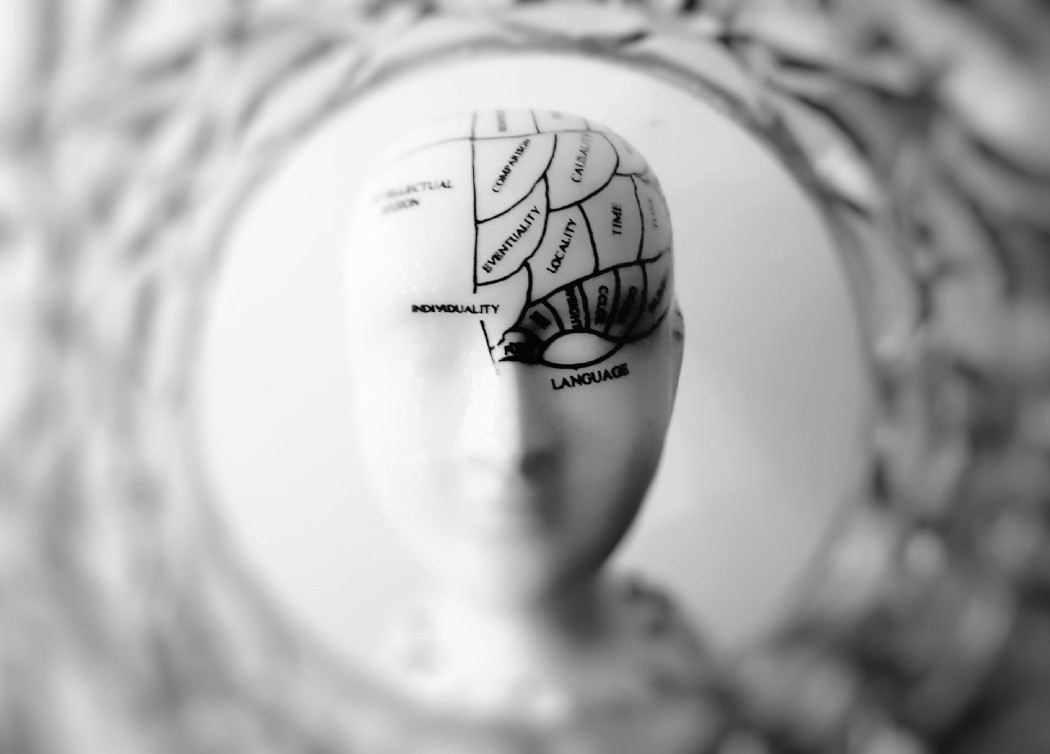Our embodied experience and self-consciousness involve an extremely complicated and dynamic organ, “the brain”. Brain’s function is often misunderstood as the centre of cognition and rational thinking. However, scientists support that the brain did not evolve for rationality, did not evolve for us to think or to perceive the world accurately. It did not even really evolve for us to see or hear or feel. The brain became what it is today due to the rich and versatile environment we live in which is, firstly, experienced by our bodily properties. The brain did evolve, however, to regulate the information received by our bodily properties and environment in a way that we could move around the world efficiently.
Human brain — according to a leading neuroscientific theory known as ‘Predictive Processing’ — is designed to solve one basic puzzle: how to minimise its own long-term average surprise (prediction error) during our embodied exchanges with the world. The more volatile the environment, the less grip this core strategy gets, resulting in anxiety, stress and feelings of loss of control.
To explain this we will use a simple example and will refer to the bodily systems discussed in previous blogs such as the Nervous system, Proprioception and Interoception.
Imagine that after a long run in the park, your body becomes dehydrated and soon you perceive your throat becoming dry. So far, your brain is being informed by the biological and visceral compounds (Interoception) of the body that there is a need for hydration. It is also being informed about the body’s location in the room and at the same time — from information received from the eyes (Nervous System) — perceives the location of a glass of water in relation to the body (Proprioception). Now the brain, after computing all of the above information, is ready to make a prediction, based on previous experiences and memories, about sending the appropriate signals (Nervous System) to your arm to be extended away from your body and towards the location of the glass and eventually reach it. If the goal is accomplished and you have reached the glass successfully then the predictions made by your brain will be classified as correct and ready to be used in other instances. Imagine, now, that you don’t succeed on reaching the glass, your brain gets “surprised” and classifies its calculation as a prediction error, which it will take into account next time.

By this over-simplistic example, it is not aimed to focus on how the brain creates concepts but to raise an enquiry about how we tend to respond when faced with unexpected, surprising situations.
This could be an unexpected reaction from one of your colleagues, trying a new hobby or taking a new route to work. All of these activities involve a certain level of uncertainty. As mentioned above, we live in a volatile world where uncertainty is a normal part of life — we can never be 100% sure about what will happen next. Many people feel good about uncertainty and live lives where they seek excitement: they are often open to new experiences and are comfortable with discovering new aspects of living. Other people find uncertainty aversive, stressful, or distressing, and don’t function as well in uncertain situations. However, it is only a humane need to feel certain about things around us like our direct environment and the people that surround us, but most importantly, to be able to define the Self, its characteristics, needs, and preferences.
We often attribute to the Self static characteristics such as being stubborn, open-minded, optimistic, or irritable which reflect values, past experiences, or behavioural patterns that are most prominent in our way of living. However, the Self, as we described earlier, is an ongoing, emergent process of sensing, moving, feeling, and thinking intertwined with whatever happens outside.
As a result, having in mind a specific image of ourselves may help us feel in control and “on top” of any situation, but may also increase the chances we get surprised by an abrupt change in the environment which we failed to predict.
Do not get us wrong as we cannot praise enough the importance of having a strong sense of Self. So, how can someone have both a concrete sense of Self and be flexible and open to change? The answer is to reflect upon our responses and these are some basic steps to achieve it:
- Monitor the response; what were my thoughts, emotions, physical reactions (eg. chest tightness)
- Identify the triggers
- Evaluate; was my response an honest one, or would I respond any differently, if I could?
- Self-definitions; how would I characterise myself for responding this way (think of adjectives)
- Commonality; is this how I usually respond to similar situations or was this a new response for me?
- Final reflection; how do I feel about responding the way I did, about being authentic or inauthentic, about characterising myself with a different or similar adjective this time?
Remember, the goal of Reflection is awareness and not judgement. We all have and will be having inauthentic moments. After all, authentic moments would have no value if inauthentic ones didn’t exist.
In a continuously changing world, the most adaptable Self is a fluid and flexible Self, open to the idea of becoming redefined and reformulated, curious about what’s happening in the present, aware of its senses and its physicality and ready to identify the patterns driving its actions. This type of Self can move between authentic and inauthentic moments and at the same time be driven by meaningful goals and aspirations for the future.
A Self that acts in the present and holds the Future in Mind.
Further reading and References:
Feldman, H., & Friston, K. (2010). Attention, uncertainty, and free-energy. Frontiers in human neuroscience, 4, 215
Friston, K. (2009). The free-energy principle: a rough guide to the brain?. Trends in cognitive sciences, 13(7), 293–301.
Adams, R. A., Shipp, S., & Friston, K. J. (2013). Predictions not commands: active inference in the motor system. Brain Structure and Function, 218(3), 611–643
Ondobaka, S., Kilner, J., & Friston, K. (2017). The role of interoceptive inference in theory of mind. Brain and Cognition, 112, 64–68.
Bastos, A. M., Usrey, W. M., Adams, R. A., Mangun, G. R., Fries, P., & Friston, K. J. (2012). Canonical microcircuits for predictive coding. Neuron 76, 695–711.








